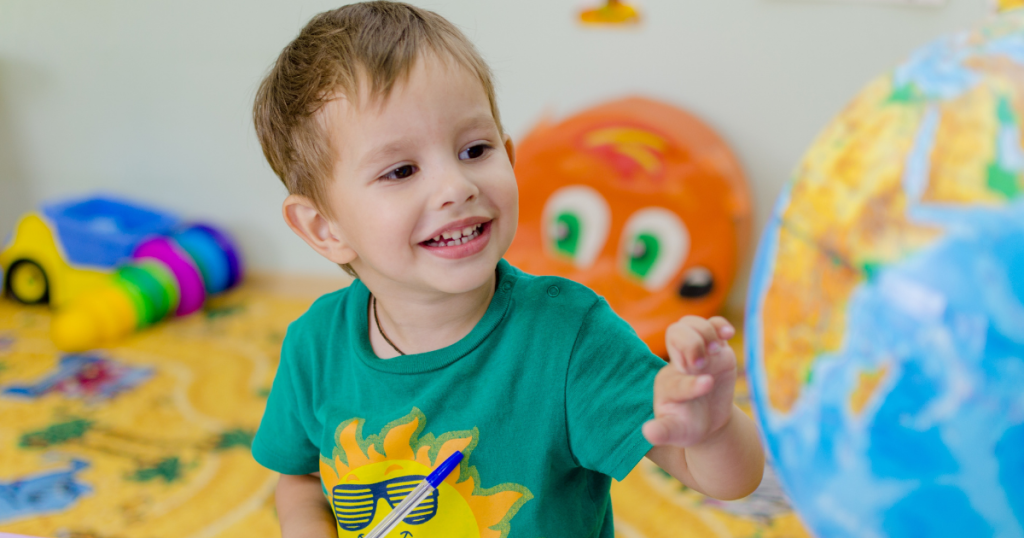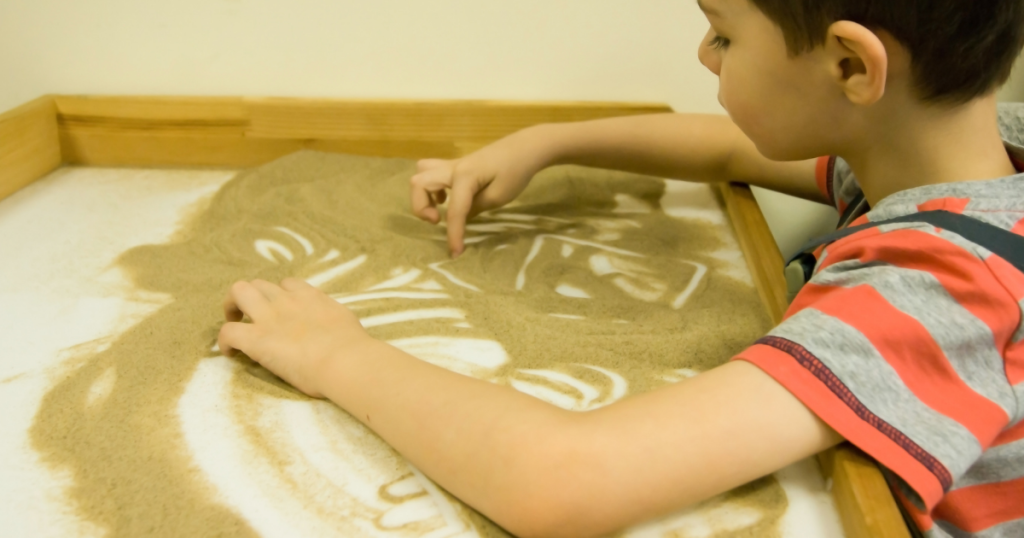
Authors: Swati A Karmarkar, MD, Texas Children’s Hospital
Shruti Rane, PhD, Kennedy Kreiger Institute, Baltimore, MD
Reviewed: July 2021
SUMMARY
Hemiplegia involves paralysis or weakness of one side of the body. It is often due to a brain injury. An injury on one side of the brain can cause paralysis on the opposite side of the body. Signs of hemiplegia other than paralysis or weakness can include:
- Seizures
- Difficulties with speech
- Difficulties with fine motor skills
- Difficulties with cognitive functioning
Testing often includes a brain MRI. MRI stands for magnetic resonance image. MRIs can produce pictures of the brain.
Treatment involves:
- Managing underlying causes.
- Treating any associated conditions. Recurrent seizures, epilepsy is an example.
- Rehabilitation. This involves treating muscle tone abnormalities. It also involves therapies. Physical, occupational, and speech therapies are examples.
JUMP TO
Disorder Overview
DESCRIPTION
The term hemiplegia means paralysis (“plegia”) of one half (“hemi”) of the body. The term “hemiparesis” is sometimes also used. Hemiparesis refers to a milder weakness on one side of the body.
Severity varies from child to child. On one end is very mild weakness. On the other end is complete paralysis of one side of the body.


SIGNS AND SYMPTOMS
Common Signs and Symptoms
Signs and symptoms can be subtle. They are sometimes missed. Generally speaking, signs of hemiplegia include:
- Differences in how a child uses left and right sides of body
- Favoring one hand at an early age in infancy before hand dominance is typically established (before age 12 months)
- Keeping one hand fisted
- Delayed walking
- Difficulty walking
- Difficulty with balance
- Tip-toe walking on affected side
- Spasticity (stiffness) or tightness in muscles on affected side
- Other abnormal muscle tone
- Symptoms of stroke such as:
- One-sided facial droop
- Slurred speech or loss of speech
- Weakness on the affected side
- Numbness on the affected side
Coexisting Conditions
Children may experience other conditions alongside hemiplegia. These added conditions are due to the injury that caused hemiplegia. They can include:
- Seizures. Seizures may immediately follow brain injury. They may also take place remotely, months or years later.
- Cognitive and academic difficulties.
- Speech/language concerns. This can mean trouble understanding speech. It can also mean trouble speaking.
- Sensory deficits. This might include changes to vision and decreased sensory perception on the affected side.
- Behavioral or psychological symptoms.
CAUSES
Hemiplegia is caused by an abnormality or injury on one side of the brain. If the left side of the brain is affected, it can result in right-sided hemiplegia. If the right side of the brain is affected, it can result in left-sided hemiplegia.
Causes at Birth
There are numerous causes of hemiplegia in children. Many are linked to events around birth. This is known as the perinatal period. In these cases, the term hemiplegic cerebral palsy is often used. Various issues can affect the fetal or baby’s developing brain. Examples include:
- Stroke
- Brain malformations
- Injury due to prematurity
- Injury due to lack of oxygen (hypoxic injury)
- Infections
- Brain Bleeding
Causes in Older Children
Hemiplegia can also begin in older children. Causes of hemiplegia in older children include:
- Stroke
- Brain tumor
- Brain hemorrhage
- Brain infections
- Physical trauma


Causes of Temporary Hemiplegia
Temporary cases of hemiplegia are possible. They can result from:
- Seizure.
- Migraine.
- Transient ischemic attack. A temporary condition in which there is decreased blood flow or oxygen to the brain. May be due to a blood clot, spasm of the artery, or blood vessel malformation.
Hemiplegia and Stroke
Hemiplegia can be due to stroke. Often, what caused the stroke remains unclear. Causes of stroke can vary, but include:
- Genetic blood clotting disorders. These are inherited conditions. There are different types of blood clotting disorders:
- Thrombosis. Increased risk of blood clots forming in blood vessels.
- Embolus. When a blood clot, typically in the heart or large vessels in the neck, breaks off, flows into the brain, and clots a blood vessel there.
- Hemorrhage. Bleeding due to one of two things. First, it may be due to having blood that is unable to clot correctly. Second, it can be due to an abnormal blood vessel formation in the brain that bleeds or ruptures more easily.
- Congenital heart disease. This is something a child is born with. It can cause blood clots to dislodge in the heart. These clots can flow up into the brain’s blood vessels. This can result in an occlusion or blockage.
LABORATORY INVESTIGATIONS
Hemiplegia can involve several tests. They may need to be repeated on a case-by-case basis. However, frequent or repeat testing is usually not needed.
Possible tests include:
Brain imaging
Usually, a brain MRI is needed to diagnose hemiplegia. The MRI can make pictures of the brain that can confirm the disorder. If hemiplegia is acute, a doctor may order a CT scan. This stands for computed tomography scan. A CT scan is another way to create pictures of the brain. A CT scan would then be followed by an MRI.
Blood vessel scans
Heart tests
TREATMENT AND THERAPIES
Immediate Goals
Brain injury typically does not get worse over time. However, there is no “cure” for brain injury. It cannot be reversed. Therefore, it is essential to address the underlying cause as quickly and effectively as possible. This can prevent further injury.
For example, the underlying cause of hemiplegia may be an acute brain infection. Or it may be a stroke. Either way, doctors’ immediate focus will be on treating these conditions. They must do so before treating the hemiplegia itself.
Rehabilitation Goals
Later, doctors will focus on treating the symptoms of hemiplegia itself. This is called the rehabilitation phase. The goal will become improving functional skills.
This treatment is individualized. It is often multidisciplinary. At the beginning of treatment, expect the treatment team to outline:
- The goal of each therapy or treatment
- How long each treatment will continue
Treatments may be reviewed periodically over time.
A treatment team may include:
- Neurologists
- Rehabilitation specialists
- Developmental specialists
- Various therapists
Therapists are an important part of rehabilitation care. You might encounter:
- Physical and occupational therapists. Physical therapists help facilitate mobility and range-of-motion exercises. Occupational therapists can help with activities of daily living and fine motor skills. These therapists may recommend special braces or orthotic equipment.
- Speech therapists. Speech therapists can evaluate any swallowing or speech problems.
Some children may need treatment for abnormal muscle tone. For instance, they may need help with muscle tightness or spasticity. Oral medication such as baclofen can help. In selected cases, injections of botulinum toxin can help.
Treatment for associated conditions such as seizures may also be needed.


OUTLOOK
The predicted outcome for children with hemiplegia varies widely. Some things that can affect long-term outcome include:
- Underlying cause
- Extent and location of brain abnormality or injury
- Whether cognition and speech are also affected
- Degree of the muscle weakness
Brain injury is permanent. However, the brain can form new connections and pathways. This is known as plasticity. Plasticity means that bodily functions may be regained or relearned over time. Therapies can help with plasticity.
Many children with hemiplegia gain the ability to walk independently. Many can attend regular classrooms. And later, many will also function independently as adults.
Possible Lifelong Challenges
Depending on the underlying cause and other factors, hemiplegia can mean lifelong difficulties. These can affect the way children perform in the classroom and community.
Milder difficulties might include:
- Fine motor concerns
- Mild gait abnormalities
- Problems finding words
- Issues with attention span
More severe difficulties might affect:
- Intellectual reasoning
- Executive functioning (the skills needed to achieve a goal)
- Academic functioning
Continuing Support
It can be helpful to have a formal plan for support and education. This plan can be based on the child’s specific needs. It can help with academic progress. Support might include:
- A Section 504 plan
- An individualized education plan (IEP)
RELATED DISORDERS
Related disorders include:
- Hemiplegic cerebral palsy. Hemiplegia is often the result of a brain injury that occurred in utero, during birth, or in early infancy. These children may be diagnosed with hemiplegic cerebral palsy.
- Alternating hemiplegia of childhood. This is a rare genetic condition. It can cause returning episodes of weakness, paralysis, or other symptoms. These episodes can alternate sides of the body. This condition typically begins in infancy. Episodes are more common in infancy and childhood. However, they can persist into adolescence and adulthood.
Resources
Organizations
HemiHelp (based in the UK)
HemiHelp is part of Contact, the charity for families with disabled children. They provide advice and support for families whose children have hemiplegia. The HemiHelp quarterly online magazine can be accessed for free. The My HemiCheck tool provides a customizable, printable hemiplegia “checklist” of how hemiplegia affects you personally.
And HemiHelp also hosts a private Facebook group for families affected by hemiplegia. Currently there are over 5,000 members.
Child Neurology Foundation (CNF) solicits resources from the community to be included on this webpage through an application process. CNF reserves the right to remove entities at any time if information is deemed inappropriate or inconsistent with the mission, vision, and values of CNF.
Research
These are clinical trials that are recruiting or will be recruiting. Updates are made daily, so you are encouraged to check back frequently.
ClinicalTrials.gov is a database of privately and publicly funded clinical studies conducted around the world. This is a resource provided by the U.S. National Library of Medicine (NLM), which is an institute within the National Institutes of Health (NIH). Listing a study does not mean it has been evaluated by the U.S. Federal Government. Please read the NLM disclaimer for details.
Before participating in a study, you are encouraged to talk to your health care provider and learn about the risks and potential benefits.
The information in the CNF Child Neurology Disorder Directory is not intended to provide diagnosis, treatment, or medical advice and should not be considered a substitute for advice from a healthcare professional. Content provided is for informational purposes only. CNF is not responsible for actions taken based on the information included on this webpage. Please consult with a physician or other healthcare professional regarding any medical or health related diagnosis or treatment options.
References
Lehman LL, Rivkin MJ. Perinatal arterial ischemic stroke: Presentation, risk factors, evaluation, and outcome. Pediatr Neurol. 2014 Dec;51(6):760-8. https://doi.org/10.1016/j.pediatrneurol.2014.07.031. Epub 2014 Aug 14. PMID: 25444092.
Dunbar M, Kirton A. Perinatal stroke: Mechanisms, management, and outcomes of early cerebrovascular brain injury. Lancet Child Adolesc Health. 2018 Sep;2(9):666-676. https://doi.org/10.1016/S2352-4642(18)30173-1. Epub 2018 Jul 27. PMID: 30119760.
Tillberg E, Isberg B, Persson JKE. Hemiplegic (unilateral) cerebral palsy in northern Stockholm: Clinical assessment, brain imaging, EEG, epilepsy and aetiologic background factors. BMC Pediatr. 2020 Mar 12;20(1):116. https://doi.org/10.1186/s12887-020-1955-z. PMID: 32164572; PMCID: PMC7069041.
KHAW, C.W.H., TIDEMANN, A.J. and STERN, L.M. (1994), Study of hemiplegic cerebral palsy with a review of the literature. Journal of Paediatrics and Child Health, 30: 224-229. https://doi.org/10.1111/j.1440-1754.1994.tb00623.x
Wu YW, Croen LA, Shah SJ, Newman TB, Najjar DV. Cerebral palsy in a term population: risk factors and neuroimaging findings. Pediatrics. 2006 Aug;118(2):690-7. https://doi.org/10.1542/peds.2006-0278. PMID: 16882824.
Sorg AL, von Kries R, Klemme M, Gerstl L, Weinberger R, Beyerlein A, Lack N, Felderhoff-Müser U, Dzietko M. Risk factors for perinatal arterial ischaemic stroke: A large case-control study. Dev Med Child Neurol. 2020 Apr;62(4):513-520. doi: 10.1111/dmcn.14347. Epub 2019 Sep 5. PMID: 31489622.
Hoare BJ, Wallen MA, Imms C, Villanueva E, Rawicki HB, Carey L. Botulinum toxin A as an adjunct to treatment in the management of the upper limb in children with spastic cerebral palsy (UPDATE). Cochrane Database Syst Rev. 2010 Jan 20;2010(1):CD003469. https://doi.org/10.1002/14651858.CD003469.pub4. PMID: 20091546; PMCID: PMC7154577.
Chen R, Cohen LG, Hallett M. Nervous system reorganization following injury. Neuroscience. 2002;111(4):761-73. https://doi.org/10.1016/s0306-4522(02)00025-8. PMID: 12031403.
Chabrier S, Peyric E, Drutel L, Deron J, Kossorotoff M, Dinomais M, Lazaro L, Lefranc J, Thébault G, Dray G, Fluss J, Renaud C, Nguyen The Tich S; Accident Vasculaire Cérébral du nouveau-né (AVCnn; [Neonatal Stroke]) Study Group. Multimodal outcome at 7 years of age after neonatal arterial ischemic stroke. J Pediatr. 2016 May;172:156-161.e3. https://doi.org/10.1016/j.jpeds.2016.01.069. Epub 2016 Mar 9. PMID: 26968833.
Kirton A, Deveber G. Life after perinatal stroke. Stroke. 2013 Nov;44(11):3265-71. https://doi.org/10.1161/STROKEAHA.113.000739. Epub 2013 Oct 8. PMID: 24105698.
Mackay MT, Wiznitzer M, Benedict SL, Lee KJ, Deveber GA, Ganesan V; International Pediatric Stroke Study Group. Arterial ischemic stroke risk factors: The International Pediatric Stroke Study. Ann Neurol. 2011 Jan;69(1):130-40. https://doi.org/10.1002/ana.22224. PMID: 21280083.
deVeber GA, Kirton A, Booth FA, Yager JY, Wirrell EC, Wood E, Shevell M, Surmava AM, McCusker P, Massicotte MP, MacGregor D, MacDonald EA, Meaney B, Levin S, Lemieux BG, Jardine L, Humphreys P, David M, Chan AK, Buckley DJ, Bjornson BH. Epidemiology and outcomes of arterial ischemic stroke in children: The Canadian Pediatric Ischemic Stroke Registry. Pediatr Neurol. 2017 Apr;69:58-70. https://doi.org/10.1016/j.pediatrneurol.2017.01.016. Epub 2017 Jan 26. PMID: 28254555.
Kansagra S, Mikati MA, Vigevano F. Alternating hemiplegia of childhood. Handb Clin Neurol. 2013;112:821-6. https://doi.org/10.1016/B978-0-444-52910-7.00001-5. PMID: 23622289.
Mikati MA, Kramer U, Zupanc ML, Shanahan RJ. Alternating hemiplegia of childhood: clinical manifestations and long-term outcome. Pediatr Neurol. 2000 Aug;23(2):134-41. doi: 10.1016/s0887-8994(00)00157-0. PMID: 11020638.
Thank you to our 2023 Disorder Directory partners:





